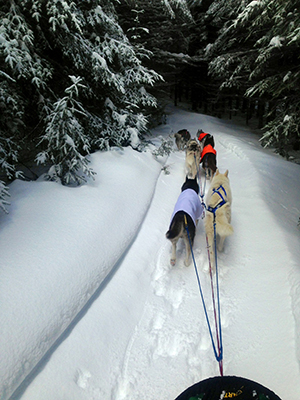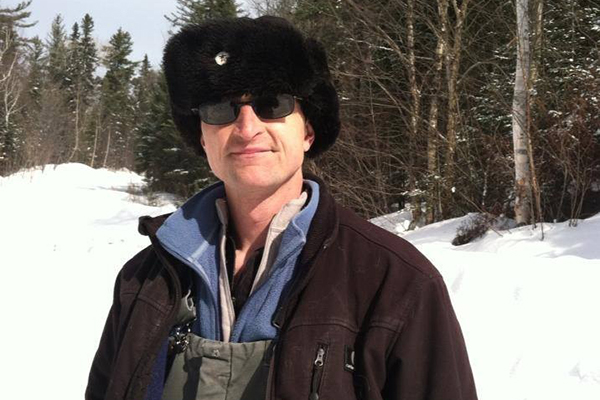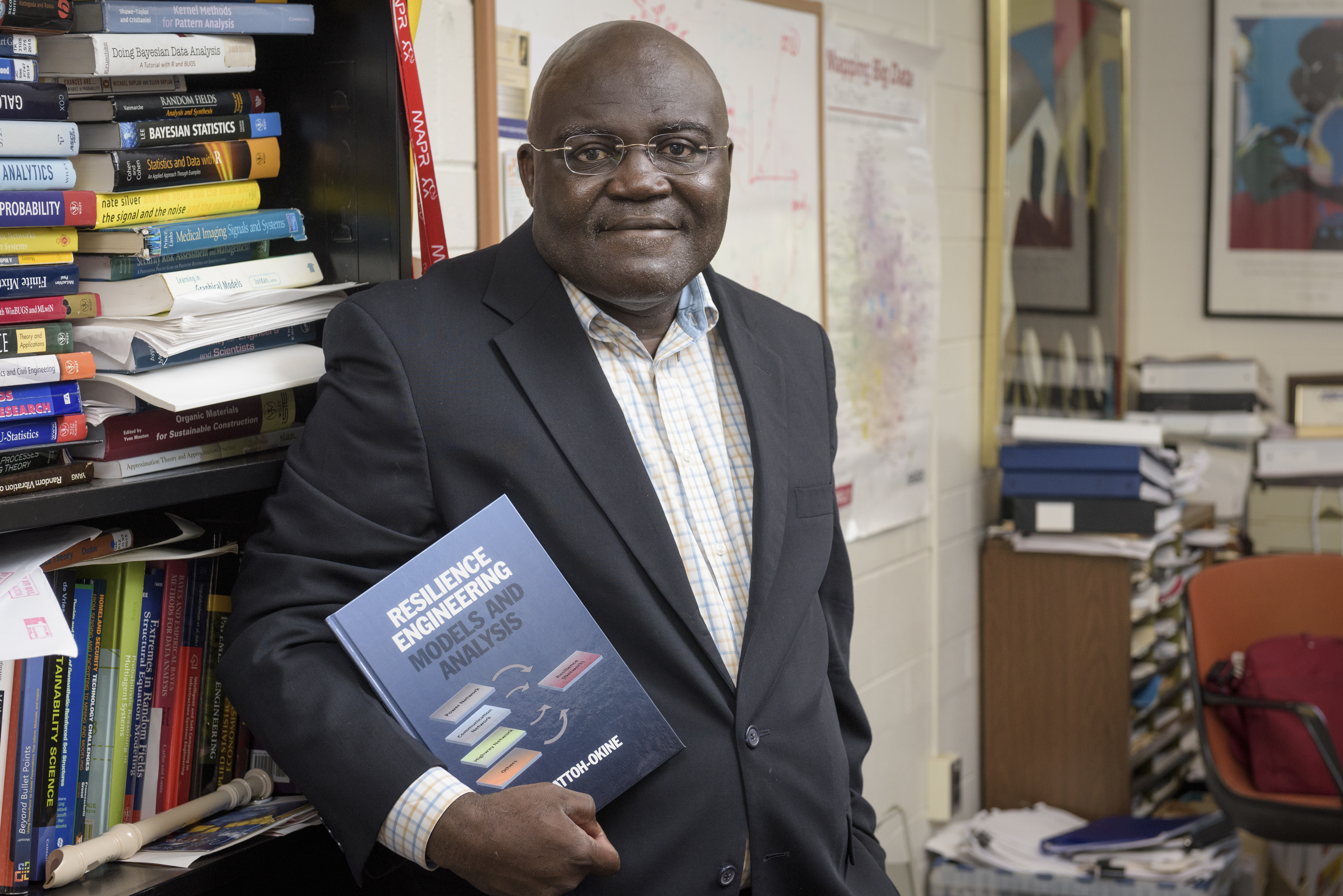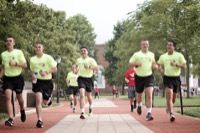

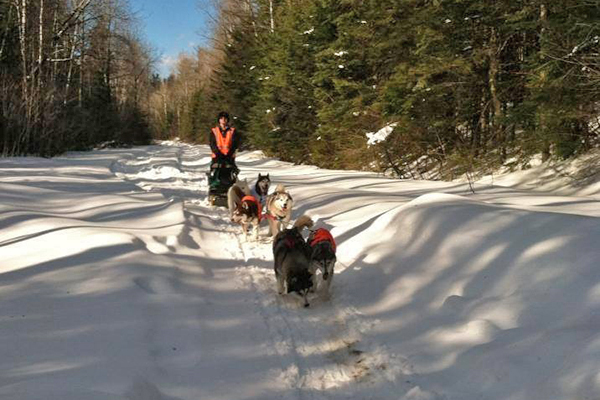
Sled dogs
UD professor competes in Can-Am Crown Sled Dog Race
10:36 a.m., March 24, 2014--When the University of Delaware’s Eric Benson entered the 22nd annual Can-Am Crown Sled Dog Race in Maine, the only thing that he did not want to see at the end of the run was the Red Lantern, which is given to the slowest team.
Luckily for Benson, he had put in enough training and his dogs ran fast enough to avoid receiving that “prize.”
People Stories
'Resilience Engineering'
Reviresco June run
Benson, associate professor in the Department of Animal and Food Sciences, and his six-dog team finished in 20th out of 26 teams, running the 30-mile race in 4 hours and 19 minutes.
Benson said that he was happy with the result, especially because he and his dogs do not race a lot.
Benson co-owns Maryland Sled Dog Adventures LLC with his wife, Catherine. Maryland Sled Dog Adventures focuses on teaching people about dog sledding and most of the events are on weekends, which also is when the races are usually held.
Maryland Sled Dog Adventures works many Girl Scout and Boy Scout troops, teaching the children about dog sledding. While the opportunity provides the young people hands-on experiences and gives the dogs training, these runs are generally for short distances, not the long 30-mile slogs through the snow that CAN-AM race entailed.
“Our normal business has us doing a lot of short distance, stop, short distance, stop, which is kind of the exact opposite of what we want,” said Benson. “On a given day when we’re running things for Girl Scouts, we might total six or seven miles, when we needed to get up to 30 miles and have the dogs run continuously.”
To supplement the training, Benson said they “did a couple of trips this winter where we went up to Maine and we would run 18-20 mile stretches.”
The week before the race, the team trained in Edmonton, Canada, and did 16-30 mile runs every other day in order to train under similar geography and temperature conditions that they would encounter during the race.
All of the dogs on the team – made up of four dogs owned by Benson and his wife and two dogs owned by friends -- are Siberian Huskies, while a lot of the other dogs in the race were Alaskan Huskies.
Benson said that this put his team at a disadvantage because while Siberian Huskies are a registered, pure breed, Alaskan Huskies can be bred with faster types of dogs. “What that lets people do is mix in German short haired pointer, German shepherd, whatever they want — even greyhound — to get the speed that they need. So in any race when they’re in the same field, they will be faster,” said Benson.
The dogs that raced in the Cam-Am were Benson’s dogs Acadia, Sammamish, Beaver and Vale, and his friends’ dogs, Lumos and Yoda.
The dogs trained with Benson throughout the winter, both locally and on trips to Maine. This winter was especially good for training locally because of the numerous storms.
“We did some training here with snow,” Benson said. “We normally assume that we will do all of our training in this area with the wheeled carts, but this year, I think we had seven or eight times we were able to get out and sled. Previous years, we’ve had zero.”
As for his role on the team, Benson said that for this particular course, the first eight miles were on an old railroad track that was converted to a trail and so from the beginning he had to slow the team down by pumping the brakes in order to save their strength.
After the flat beginning, the team moved into hills and Benson said he started what is known as pedaling, pushing the sled with one foot while the other stays on the sled’s runner. “You give a stride to help the dogs along. The other thing you do is sometimes you carry a ski pole and as you’re running along, you’ll use the ski pole to help add a little bit of energy to the team,” said Benson.
Towards the end of the race, at about mile 22, the elevation started to rise. “From mile 22-28, it was a tough run. A lot of helping the team, a lot of running up the hills, a lot of pedaling, a lot of poling,” said Benson.
As for how he got involved in the sport, Benson said it started when his dog Zoe, who has long since retired, wouldn’t tire out on normal walks around the block. They got into it with a very simple cart and two dogs — the other was named T-Bone — and then started adding dogs and equipment to get to where they are today.
Benson said that it is a little tricky to balance such an intensive hobby with his job as a professor, but that sometimes the two worlds collide nicely. “I did bring some of the sled dogs in last fall for my emergency animal management class when we were talking about working dogs, and that was actually a neat tie-in,” said Benson.
“Working dogs, including sled dogs, are managed very differently from companion animal dogs and having had the sled dogs, I really understand a bit more about that,” he said. “We’re kind of in a transition zone because our dogs are still pets, which is not traditional working dog mentality, but we’ve transitioned more toward a traditional working dog structure and so that definitely fit well for discussions in the emergency animal management class.”
Article by Adam Thomas
Photos by Catherine and Eric Benson




